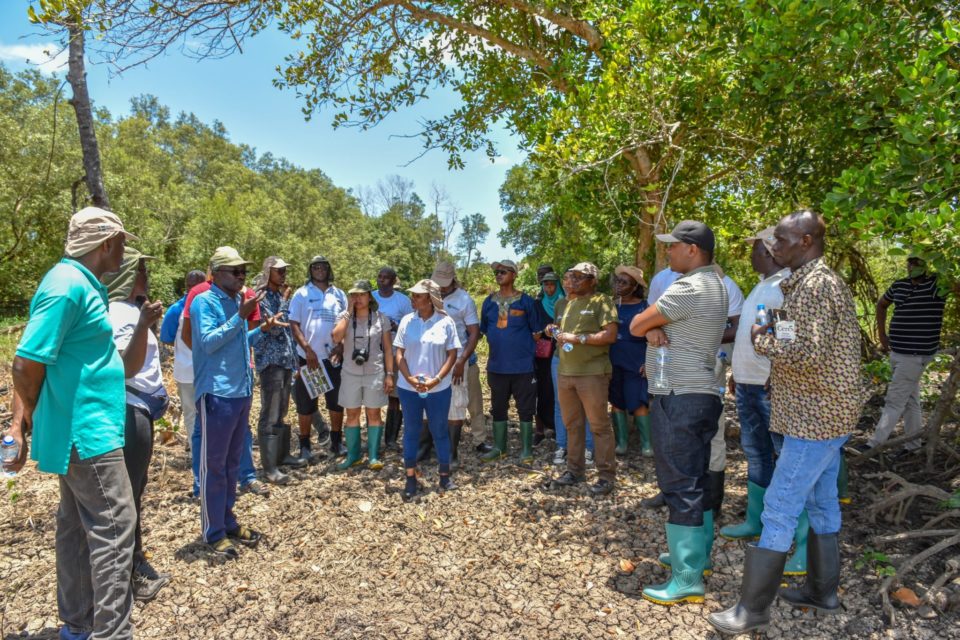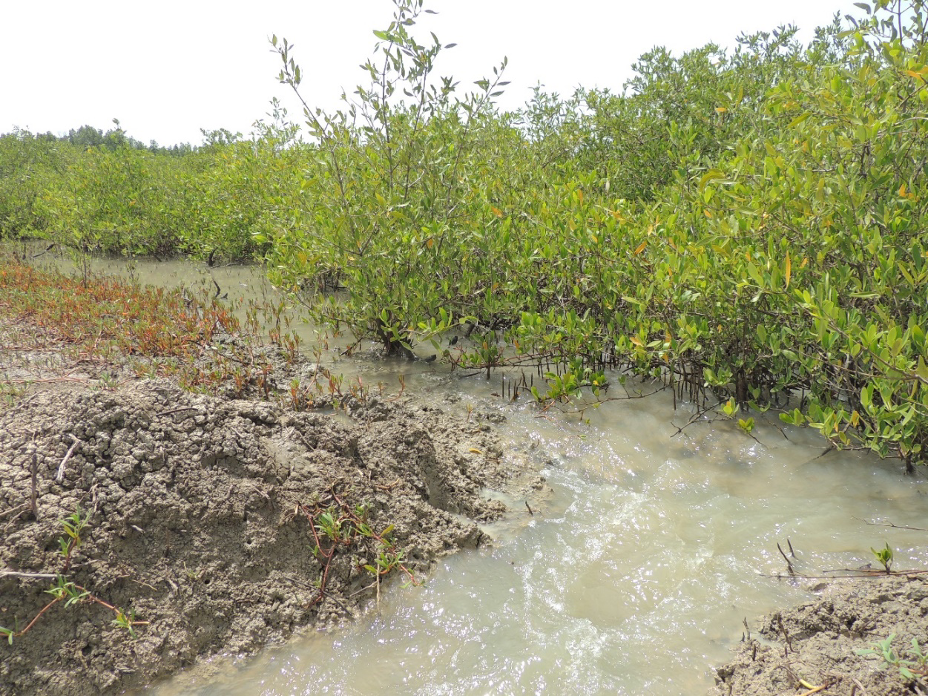
Wetlands International Facilitates Sharing of Best Mangrove Conservation and Restoration Practices in Africa
-
Climate and disaster risks
-
Climate mitigation and adaptation
To advance the sharing, learning, and replication of best mangrove conservation and restoration practices between mangrove stakeholders in Africa’s Western Indian Ocean and the Atlantic Ocean regions, Wetlands International and its partners organised a series of exchange visits in 2022. We also facilitated the establishment of a continent-wide Platform for Mangrove Conservation, to improve the interaction between African mangrove networks.
Throughout the year, mangrove exchange visits brought together conservation practitioners representing communities, policymakers, civil society organisations, and researchers from Kenya, Madagascar, Mozambique, and Tanzania (WIO) and Senegal, Guinea Bissau, Guinea, Sierra Leone, Liberia, Nigeria and Gambia (Atlantic Coast) as well as development partners.

The first of the visits were held in March in Senegal’s Saloum delta and the Bamboung Marine Protected Area . These visits offered practical examples of community involvement in mangrove conservation through the provision of funding for livelihood diversification and coastal protection. In July, stakeholders from West African countries visited several of Wetlands International‘s mangrove restoration sites in Cacheu National Park and its buffer zone in Guinea Bissau, where they saw best
practices in site selection, community engagement and restoration methods to ensure sustainability of restoration activities. The most recent exchange took place in the Rufiji Delta in Tanzania end of October.
One of our aims is to inspire upscaling of Ecological Mangrove Restoration (EMR) to address the impact of climate change, and boost biodiversity and people’s livelihoods. EMR enables natural mangrove regeneration, which sees higher success rates and results in more resilient and sustainable mangrove forests than conventional mass tree planting which fails in approximately 80% of all mangrove restoration initiatives1. With EMR a broader set of interventions is implemented that put in place socio-economic and biophysical enabling conditions for mangrove recovery. It is essential to create those conditions at scale in order to yield meaningful results across wider landscapes.
For instance, Wetlands International has since 2015 recovered 681 ha of mangroves in 14 sites in Cacheu since 2015, largely by promoting the natural regrowth of mangroves. We breached embankments to restore the hydrology and dug creeks to facilitate tidal exchange. These interventions improved the soil quality by flushing out salt and acids, by bringing in nutrients and by making the clay softer and more suitable for mangroves to settle. Along with the tides, large numbers of propagules entered the restoration sites, leading to rapid recruitment of seedlings and consequent mangrove establishment. In addition, we established 8,000 ha of community-based protected forest under government law and managed by communities, reducing pressure on mangroves and providing thousands with increased income.

By bringing together its partners across the region to these demonstration sites, Wetlands International helps partners and stakeholders to replicate and upscale these measures and achieve joint mangrove restoration plans.
Ebenezer HOUNDJINOU, member of the Benin delegation said –
“The exchange visit to Bissau on natural regeneration was a real experience for us that must be capitalised on. We are interested in the implementation of the restoration management to restore 8 hectares of mangroves in the Grand-Popo 2023 area. This will be the starting point for us to experiment with this approach and extend it to others if possible. At the end of this year, Wetlands International can already support us by assessing sites and providing technical support.”
Despite different ecological conditions, different countries in both regions can highly benefit from exchange of best practices and lessons learnt, not only in terms of concrete conservation practice but also regarding governance, strategy development and policy. Experiences from sub-regional platforms and networks such as the Western Indian Ocean Mangrove Network and the Saloum delta mangrove platform spurred discussions and ideas toward the establishment of an Africa-wide Platform for Mangrove Conservation to facilitate collaboration, regular exchanges, learning and sharing of solutions to challenges faced by mangrove forests.

In March, a steering committee was nominated to help define the platform’s governance and sustainability and three working groups were created that include researchers and government institutions. These formed part of the core discussions during the exchanges held in Dar es Salaam, Tanzania this October after visiting the Rufiji delta where they witnessed first-hand the external drivers that impact on mangrove conservation and restoration. These drivers include rice farming (also faced in Guinea) and cattle grazing compounded by logistical challenges when moving within the delta.
Dr Elinasi Monga, IUCN’s Tanzania Coastal and Ocean Resilience Manager stated: “It’s imperative that all key stakeholders including national government and local communities and their representatives are brought together to ensure they develop a common vision and strategies to disseminate and implement the revised management plan for Rufiji’s mangroves conservation and restoration. This would counter the two main drivers and resolve some of the challenges such as governance issues and lack of coordination between stakeholders.”
Diana Kishiki, Mangrove Focal Point Officer with Kenya Forest Service said:
“A regional platform provides an important space for upscaling and replication of best applicable practices across the two regions in Africa. Moreover, it will help foster relations across the key mangrove actors by ensuring there is an exchange and flow of knowledge and information, provision for networking, and creation of awareness and sensitisation about these fragile ecosystems. As the world advances in technology and innovation to support the management of information concerning mangroves, this platform can provide an enabling environment to showcase such functional”.
Wetlands International has already worked for many years with local communities, NGOs and governments in Africa to reverse the negative effects of mangrove degradation across the continent. The exchanges are conducted as part of Save our Mangrove Now!, in collaboration with WWF Germany and WWF US, IUCN and BMZ, Mangrove Capital Africa, supported by DOB Ecology and Source to Sea: Eastern Africa Wetland Initiative, in partnership with the Swedish International Development Cooperation Agency (Sida). The exchange in Guinea Bissau was conducted as part of the “Mangrove Forest Management from Senegal to Benin” (GeFoMa) project and the To Plant or not to Plant project.
More information:
Lilian Nyaega
[email protected]
Rokyatou THIAM
[email protected]
Meno de Boer
[email protected]
